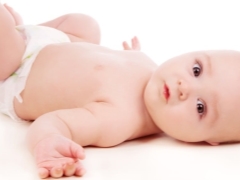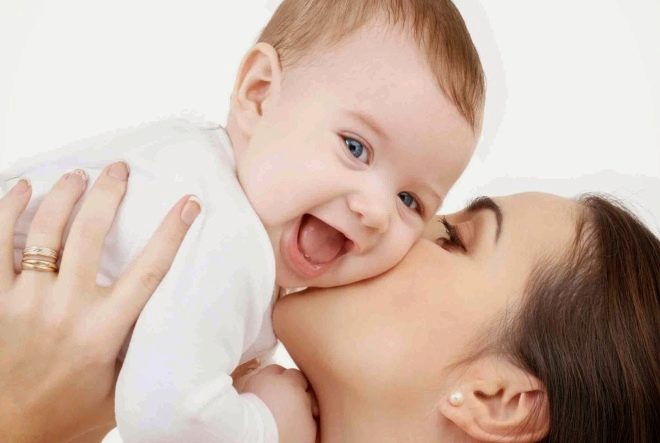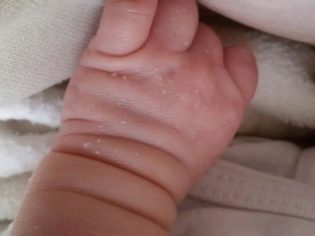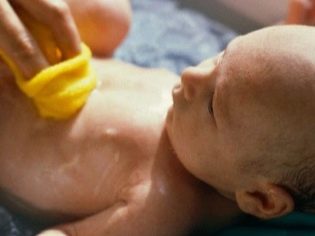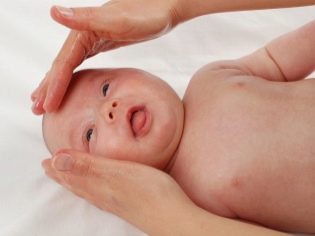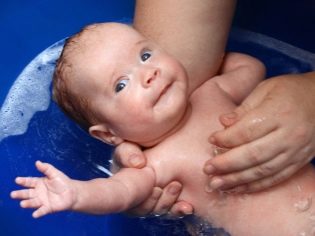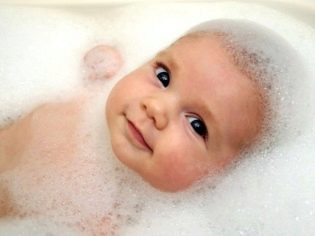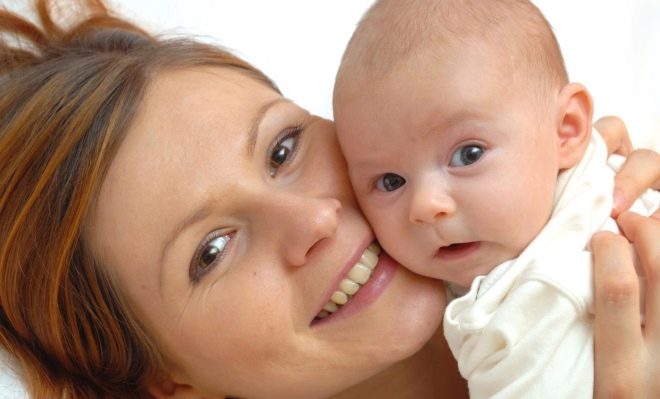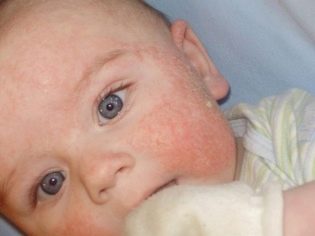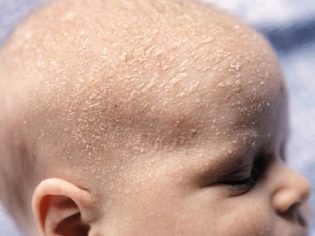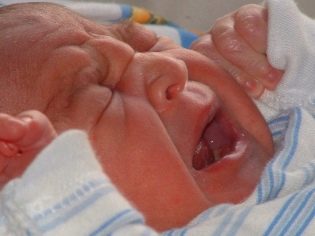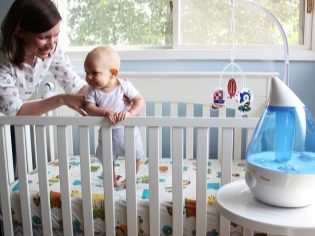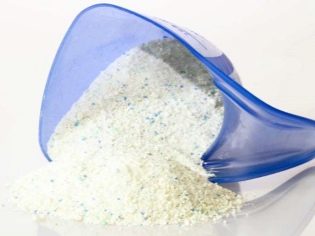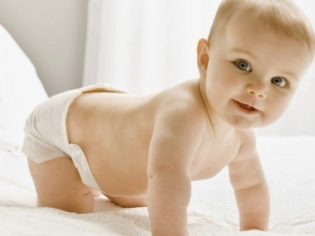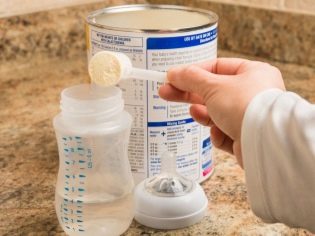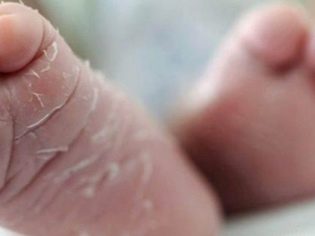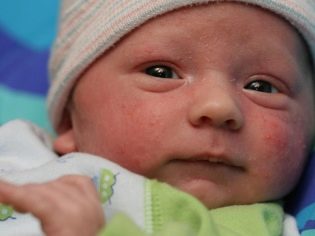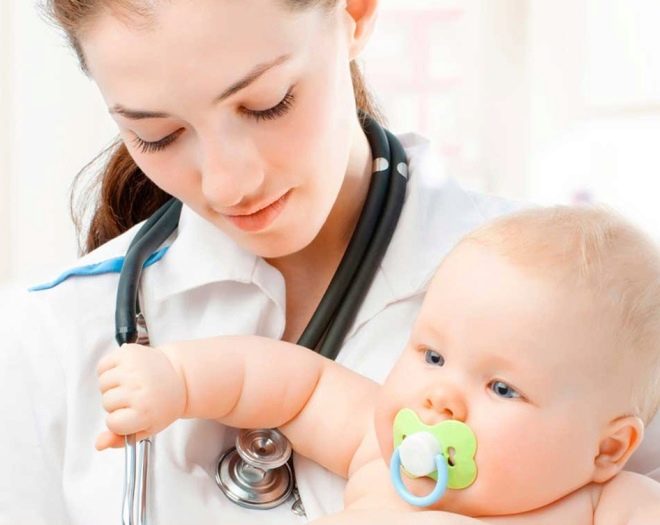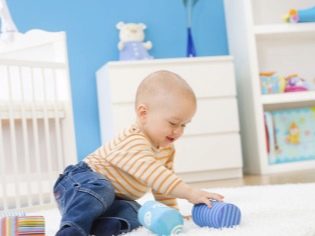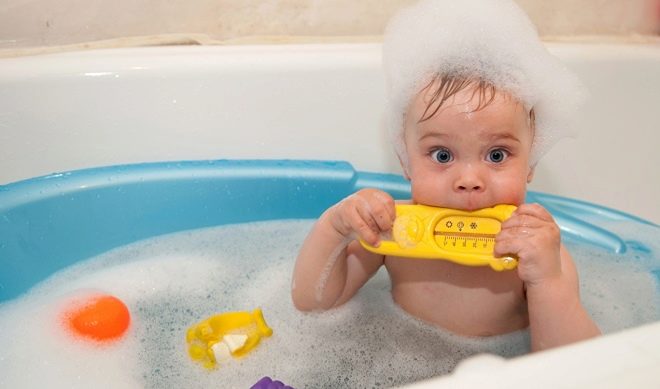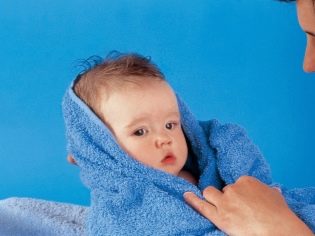Why does the newborn "peel" the skin and what to do?
If the newborn has skin around, the mother cannot remain calm. And it is quite understandable, because the condition of the skin in most cases reflects the general health of the crumbs. Is it worth worrying when peeling the skin of a child in the first month of life and what to do if the skin really does climb, we will tell in this article.
What's happening
Peeling of the skin - the process is normal and completely natural. It was invented by nature so that dead skin cells could make room for young cells. If the skin ceases to peel off, then the epidermis - its outer layer will grow so that the skin becomes thick and rough as armor.
Exfoliation of dead keratin cells is called desquamation. It can be physiological and pathological. And if a peeling skin in a child older than 3-4 years is almost always a reason for a visit to the doctor, then in newborns (children up to 28 days old) desquamation is more often innocuous physiological in nature. At this it would be possible to calm down, if everything was so unambiguous.
But in practice, excessive peeling can be a "signal" for parents that the baby is uncomfortable, that the time has come to change something.
In order to recognize these "signals", parents should have an idea of why the skin does not peel off in a baby in the first month of life.
The reasons
Having found in the child fragments of skin with traces of strong desquamation, you should not panic and call the Ambulance. Mom needs to calm down and sensibly evaluate all possible causes of desquamation.
Adaptation
Babies are born in a thick original lubricant. During the last months of pregnancy, she has been actively producing sebaceous glands located on the baby’s skin. After birth, the delicate and thin skin is protected by a lipid mantle - with an invisible layer of fat, the mantle is designed to protect the baby from mechanical stress, but it practically does not protect it from bacteria or thermal temperature drops.
After birth, the baby is waiting for a different habitat - air. She is not at all like the water one, in which he remained all nine months of her mother's pregnancy. Naturally, skin needs time to adjust to new conditions.
First of all, in the process of adaptation, that very lipid mantle suffers, the baby’s skin becomes more vulnerable and may begin to lose moisture actively. This is how dry areas are formed on the body with visible desquamation.
Adaptive desquamation does not require treatment, since it is a temporary phenomenon, which by the end of the neonatal period (by the end of the first month - the beginning of the second) passes without a trace.
Parental hygiene errors
Sometimes the newly-minted mom and dad care so much about taking care of their newborn baby that they consider it their duty to wash it twice a day and always with baby soap. The impact of the detergent on the lipid protective layer almost kills it in a matter of days. The skin is defenseless. This causes drying of the epidermis and premature dying off of keratin cells.
The other extreme is too careless approach to the hygiene of the newborn.. As a result, diaper rash and prickly heat are formed on the skin of the crumbs, and the skin that has dried up after the inflammation begins to peel off strongly and eventually peels off in large clumps. It is quite painful for the baby. Most often, such desquamation occurs in the groin, on the buttocks, under the arms and in the skin folds - on the arms, legs (under the knees), on the neck (under the chin).
Nutrition and Metabolism Issues
Severe peeling and peeling of the skin from the fingers and toes, as well as from the palms of the crumbs, can speak about pathology. The most likely cause is a lack of vitamins A and E. A newborn should receive them with mother's milk, and if the mother’s body lacks these substances, then the baby will feel their lack in a week or two of independent life.
Allergy
The skin becomes dry and begins to peel in the event that the child has an allergic reaction to food (in this case, to components of mother's milk or milk formula), as well as to medicines and chemicals. This peeling is quite easy to recognize. it is accompanied by reddening of the skin, perhaps the appearance of a small rash.
Peeling can occur on any part of the body, but most often it is noticeable on the face, cheeks, nose, forehead and chin of the crumbs, behind the ears, on the scalp.
Fungi and bacteria
Pathogenic microflora attacks a child from the first minutes of his life in this world. A weakened, premature baby, a baby with congenital pathologies, diseases, can not cope with problems that require the work of not only general but also local (skin) immunity, and then various infections manifest themselves. Peeling characteristic of streptoderma, as well as a huge number of a variety of fungal pathogens. Infectious desquamation will not be an independent symptom.
The child will definitely show other signs of an infectious disease - loss of appetite, sleep disturbance, moodiness caused by pain and itching, fever.
Violation of the microclimate
The hotter the room where the child lives, the higher the probability of pathological changes in the skin. The skin becomes dry, the upper stratum corneum breaks easily and is injured, and then begins to peel off. Insufficient air moisture, dustiness, heat, sweating of the child in combination with the previously listed external conditions and create the effect of "scalded skin" with the appearance of prickly heat, dried out fragments.
At the same time, parents often forget that moisture is needed more than adults, because the skin of newborns is 90% water. Therefore, moms and dads do not always give due importance to the amount of ordinary water drunk by the baby.
Exposure to irritants
Peeling and peeling of the skin on the body can be a consequence of exposure to the skin of harmful and aggressive substances, which are contained in the washing powder, which the mother washes the baby’s underwear and bedding. For the same reason, the skin begins to peel around the navel after the umbilical wound has healed, if the parents, following the recommendations of the hospital staff, treated the umbilical zone with green paint.
How can I help you?
A newborn boy and girl do not need to immediately go to the doctor. First you need to remember well and analyze:
- that mom ate the day before;
- whether the baby changed the formula, if fed artificially;
- is it not hot in the room and is the air sufficiently humid in the house;
- Does the baby sweat?
- whether there are clothes of synthetic or semi-synthetics on it;
- Does he have signs of diaper rash?
- Does your baby have a fever, pustules in different parts of the body, or eating disorders (diarrhea, vomiting, excessive regurgitation, lack of appetite)?
A doctor is required:
- with extensive and deep peeling, when under the layer of dead and detached epithelium there is a pink bright layer of thin skin, there are cracks, blood, microtrauma;
- any peeling due to fever, eating disorders, skin redness and the appearance of rashes and other pathological symptoms.
Thus, adaptive peeling and slight superficial peeling of the skin, not accompanied by changes in behavior, appetite and well-being of the child, do not need to be called in by a doctor.
What the doctor will do
A doctor with complaints of desquamation will certainly take blood tests, feces and urine to assess whether there is a shortage of vitamins A and E, as well as other beneficial substances, whether the baby has a bacterial or fungal infection, or is allergic. Samples of detached epithelium will be tested in laboratory conditions.
On the basis of the data obtained, a medical verdict will be issued and appropriate treatment assigned - antibacterial, antifungal, anti-allergic.
What can parents help?
Very much parents can do on their own. It is enough to note that in 90% of desquamation cases, the wrong climatic conditions and hygienic “misses” of moms and dads are to blame:
- When detecting flaking in a child need to measure the air temperature in the room. Ideally, it should be at the level of 20-21 degrees of heat. If it seems too cool to parents, then you can additionally put the child on one more vest. Humidity protects the microclimate from drying out. The optimal values of this parameter are 50-70%.
- To help create the right moisture can a special device - humidifierit costs not much, but the whole family will benefit from it, because the air that is sufficiently humidified is not only healthy baby’s skin, but also effective prevention of respiratory diseases and viral infections for all family members.
- With daily bathing it is worth refusing soap, scum and shampoos, use baby soap preferably no more than once every 3-4 days. Wash the scalp of a newborn with soap is not worth more than 1 time per week. In the water, you can add herbal decoctions - chamomile or series. Water temperature should not be too hot, not higher than 37 degrees.
- After water procedures baby do not intensively rubbed with a towel, it hurts the skin, it is better to dip it with a soft towel or a flannel diaper, so that moisture can remain and penetrate into the middle layers of the epidermis. For dry skin, baby cream, peach, apricot, almond or liquid paraffin can be used after bathing. It is better to refuse powder at all, because talc helps to dry the skin.
- The child must drink water. Between feedings, even if he is fully breastfed, the baby should be watered so that its tissues, including the skin, do not lose moisture.
- There is usually enough corrections that parents will make in the daily life of the newborn. After the establishment of normal temperature and humidity, bathing without soap and cosmetics, refusal of powder, the problem with peeling and peeling of the skin is safely solved within a few days. The skin restores moisture and becomes more elastic. If it doesn't, be sure to consult a pediatrician about the possibility of using oil solutions of vitamins A and E, with the approval of the doctor, can be applied to dry skin areas topically to restore vitamin balance.
Children with peeling with caution do daily restorative massage, be sure to use for this fat cream or massage oil, so as not to cause him additional skin injury.
- Newborns with problematic flaky skin useful tools such as «Bepanten», «Dexpanthenol, Borough Plus. It is important to protect the skin from exposure to wind, frost and direct sunlight. So little kids cream with UV protection is not recommended, so the baby should be in the shade so that sunburn does not become another reason for desquamation.
All about proper care for a newborn to prevent desquamation, see below.
